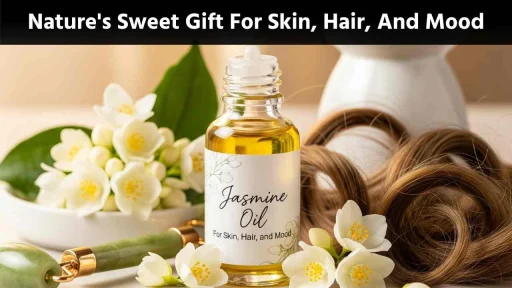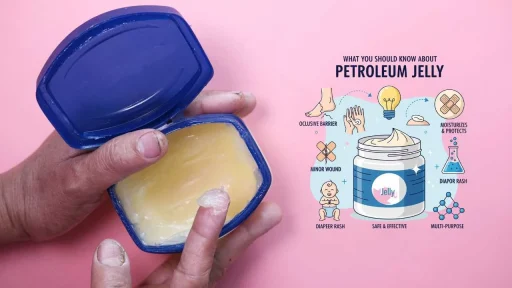There is nothing wrong with being enthusiastic about the establishment of a cosmetic brand, and most entrepreneurs are right: it is a brand new wave, because in the beauty the market is growing customers who promote greener goods and individualization.
If you want to navigate the hive in this activity, you need motivation and above all a strategy. The plan you carve for cosmetic business is more than just a playground for the provider; This is your travel map.
This guide will guide you through each part of your plan and provide detailed explanations and knowledge necessary for professional and readable.
Read Our Book: Click Here
Your business vision
Introduce this brand concept with passion and vitality. Define your mission and vision: clean products, vegan skin care, luxury make -up or everyday requirements available? What distinguishes your brand from others? Maybe excellent ingredients or responsible resources.
Then come with your basic values-Snad, transparent sources prioritization, All-Innoting or Hyper blocked by production. All this helps to create a brand identity that resonates with an ideal customer and leads every decision, from marketing to operations, even to partnership.
Summary: Your picture
Your powerful summary is a short but powerful overview of business. It consists of a short description of your brand, then your USP. For example, you can promise to use formulas that are safe and wrapped in recycled glass.
Then describe the financial peaks: estimated costs of initial and expected revenues for the first and from there to the break. Indicate how much money you need and what you are planning if you are looking for investments. This part must lure readers to read on your business plan.

The legal structure and story of society
Then fill in the overview. Describe the legal structure of your company. Are you the only owner or would you create LLC? Soon tell you why you chose it, such as liability or tax benefits.
Share your brand’s history. Why did you decide to create this series of cosmetics? What have you ever achieved, such as formulation of signing products, ensuring the manufacturer’s partnership or creating a range of products tested in the beta version?
Read More: Private Label Cosmetics: How to Launch Your Own Brand with Minimal Investment
Market Analysis: You know your customers and competitors
Then continue with a thorough market analysis. What trends are now ruling beauty: natural, vegan or without gender products? Do they focus on budget or premium skin care products?
According to the industry data, consumers aware of the production of cosmetics. When using these resources, much will learn to maximize your brand’s position.
The next step is a large audience of age, gender, skin problems, shopping behavior or aesthetic taste. Analyze competitors: their weaknesses; Even more important is what they lack.
Perhaps they will not have ecological packaging, transparency for their lists of folders or inclusive shades to name at least some. These gaps form bases for placing the brand authentically and strategically.
Product and service: Complete overview
Once you understand the market, it is time to clearly define your products. Here he begins to describe in detail the entire product line, such as lipsticks, cleaning the skin’s face skin facing skin face skin lines, serum or all-in-one cosmetic sets. Why each product was selected and compared to meet customers’ needs.
Share your vision for other services that you could eventually integrate, such as consultations with virtual beauties, subscriptions or limited editions. Know what value your products bring; Their ingredients and for which they are designed to help build trust and enthusiasm inside the parties involved.
Read Our Project Report: Click Here
Operating Plan: How do you succeed
Therefore, discuss in detail your operating plan. Start a production strategy. Will you formulate yourself or contractual production, private brand or white mark?
Explain why you decided to conclude contracts or private brands; For example, a private label allows a quick start with minimal investment; On the other hand, there are a lot of wording.
Then you develop quality control measures. Cosmetics must meet regulatory standards set by the FDA or local authority, which may include safety tests, stability studies and compliance with regulatory requirements. Stress all the steps you are doing to ensure legality and quality.
Indicate your location strategy for production. Are you planning to import your products and store them in the center for content or are you near the cosmetic production center? Explain your production capacity, delivery time, minimum order and stock strategy.
Marketing and selling
Then describe your sales and marketing strategy, including operations. This is branding; Your name, your logo and your story. Packing aesthetically should also look. Visuality will make you excel in a very crowded market.
Clarify their marketing channels; On the other hand, you can use SEO, social media, e -mail newsletter or beauty fairs. Also define your promotional strategies: Consider starting discounts, recommendations programs, beauty instructions or a limited edition gift set.
There are several good ways to use microinfluentor tactics and offer samples during festival periods that are common to most markets such as India.
Read More: Building a Success in the Cosmetic Industry with Serum, Cream and Shampoo
Financial Plan: profit mapping
Now develop your financial plan in depth. Start – insert the cost of research and development fees and formulation, packaging, branding, website design, first stocks, licensing and marketing.
Map your operating costs, including production costs, storage costs, transport, marketing expenditure, employees’ salaries, compliance and more. Estimate seasonal variations such as weddings or festivals, especially in India. This can cause the sale to point.
Include financial projections such as:
- Break analysis is when your income covers your costs.
- Sales forecasts for the first year, to quarter and monthly
- Projection of the annual income for the years 2-5
- Cash flow statement
- A profit and loss statement
Stress the assumptions such as the average order value, the cost of obtaining the customer and the expected growth rate. If you are looking for funding, describe your financing requirements and how the funds will be used.
Milestones and Risk Management
The next step is to present the timeline that outlines key goals.
- 1st month: Complete business plan and registration company
- Month 2: Secure Formulation/Manufacturer and Complete Branding
- Month 3: Approval of packaging and regulation
- Month 4: Initial website and initial marketing campaign
- Month 5: Start filling out commands and creating impact cooperation
Also, outline the risk alleviation plans. Identify possible risks such as delay in formulation, lack of components or regulatory changes. Share special strategies for their solution, such as diversification of your supplier base, investing in stocks in stock or maintaining current regulations.
Find the Best Idea for Yourself With our Startup Selector Tool
Conclusion
A detailed cosmetic business plan will help you navigate the complexity of the brand building and put it in scaling. Begin with a convincing vision and support it with a brief but engaging summary.
Then logically explain the company’s structure, product and marketing strategy, along with market knowledge and operations plan. Add realistic financial predictions and clear goals. Also consider risk management.
This business plan can be used as a plan for your cosmetic brand, but also for building investors’ trust. It will help you determine credibility, clarity and growth in the long run.
Cosmetic Business Plan: Frequent Questions
- How much does the launch of a cosmetic brand cost?
The cost of starting a cosmetics brand depends on the strategy. Basic products of private brands can cost only a few lakh rupees (3-8 Lakhs for India), but own formulations and branding can move budgets up to high as RS15-40 lakhs
- Should I myself private or formulate products?
If you want to make a profit, a private labeling is a way to go. It requires less capital and offers 30-45% margin. Formulation offers higher margins and uniqueness (50-70%), but requires greater investments and comprehensive compliance with regulations.
- What regulatory approval are required?
Depending on the model, you will need to obtain business registration in India, GST license (in India) and cosmetic production or import license. It is also important to comply with the regulations.
- What are the best ways to choose sales channels?
Diven your possibilities: direct consumers online for higher margins, electronic trading markets such as Nykaa and Amazon, for greater reach or offline partnerships with boutiques and salons to increase visibility. Reach the best results by adapting to the preference of target customers.
- How can I stand out on a crowded market?
Focus on positioning a niche such as vegan, inclusive or sustainable ranges. Focus on transparent stories about ingredients, efficient branding and consumers’ involvement through workshops or campaigns.







